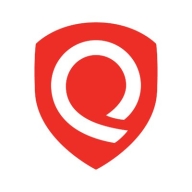

Find out what your peers are saying about CrowdStrike, SentinelOne, Microsoft and others in Endpoint Detection and Response (EDR).

Qualys Multi-Vector EDR is designed for real-time threat detection and response, offering comprehensive visibility into potential security breaches across endpoints.
This solution integrates seamlessly with other Qualys modules, facilitating automated workflows that streamline incident management and enhance efficiency in monitoring and mitigating cyber threats. With features like real-time monitoring, detailed reporting, and proactive alerting, security teams can quickly identify and address vulnerabilities. While appreciated for its scalability and ease of deployment, users suggest improvements in integration, reporting, and configuration to further enhance its capabilities.
What are the key features of Qualys Multi-Vector EDR?Qualys Multi-Vector EDR is implemented across industries such as finance, healthcare, and retail, where real-time threat detection and automated response are critical. Its ability to integrate with existing systems and provide detailed reporting makes it a valuable asset for enhancing cybersecurity measures in diverse environments.
Trend Vision One Endpoint Security delivers comprehensive antivirus, data protection, and device management. It offers robust threat detection and is deployable on-premises or via the cloud, making it versatile for endpoint security across organizations.
Emphasizing reliable endpoint security, Trend Vision One guards workstations and servers with extended detection and response features. Its machine learning-driven threat detection offers protection from malware and viruses, including zero-day threats. With seamless updates and automation, it minimizes administrative burdens, making deployment efficient. Criticisms include high resource use during scans and integration complexities, with calls for improved data loss prevention and better encryption. Users see the need for enhanced Linux support and quicker security updates.
What features define Trend Vision One Endpoint Security?In the finance sector, Trend Vision One is implemented for robust data protection and regulatory compliance. Healthcare providers rely on it for protecting sensitive patient information from cyber threats. Retailers use it for safeguarding payment systems and customer data against breaches, ensuring uninterrupted business operations.
We monitor all Endpoint Detection and Response (EDR) reviews to prevent fraudulent reviews and keep review quality high. We do not post reviews by company employees or direct competitors. We validate each review for authenticity via cross-reference with LinkedIn, and personal follow-up with the reviewer when necessary.